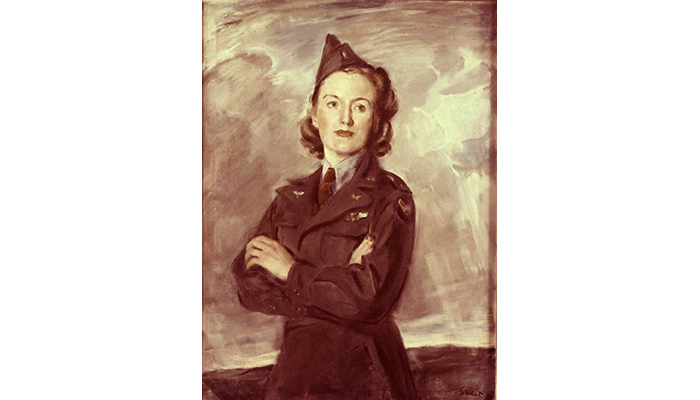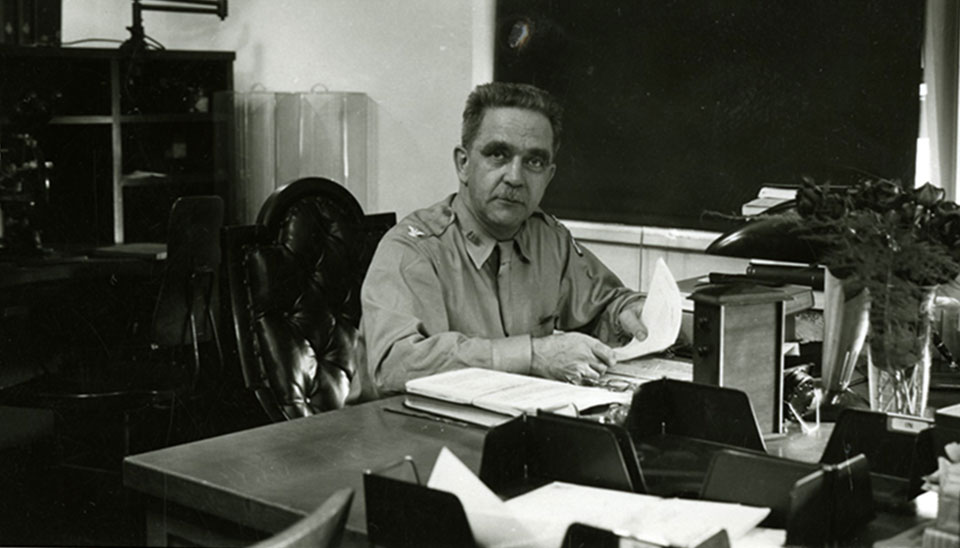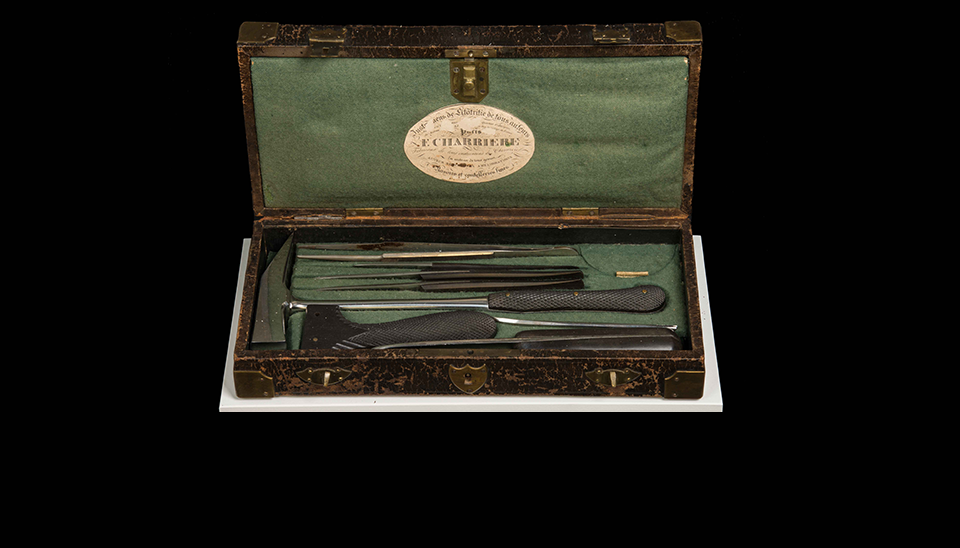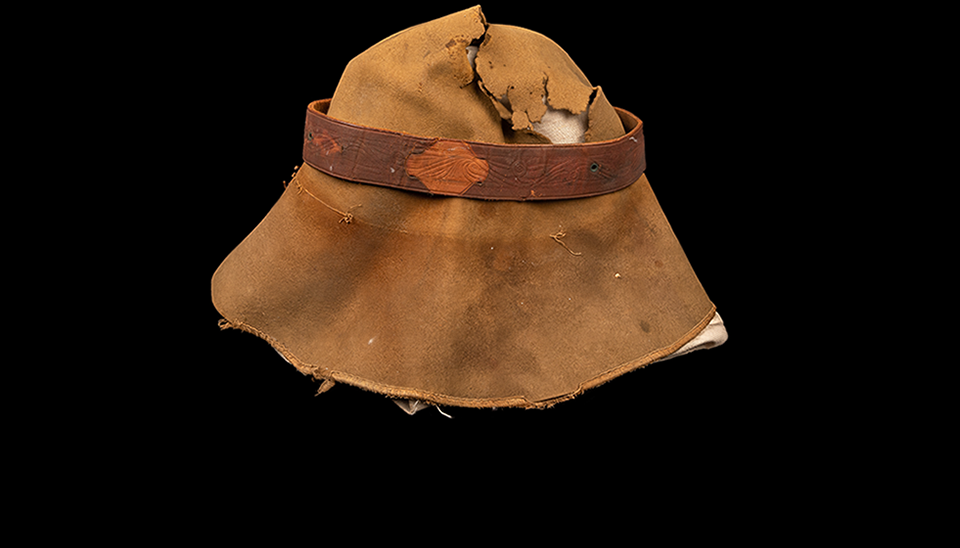When most people think of the women in aviation during World War II, they think of the famous WASPs - the Women Airforce Service Pilots who served with great distinction. But military medicine also remembers a much smaller group, just about 500 women, who served as flight nurses in the U.S. Army Air Force (precursor to the current U.S. Air Force). Alongside flight surgeons and enlisted medical technicians, these "winged angels," as they were known, air evacuated 1,176,048 patients throughout the war.
The USAAF oversaw an enormous and rapid expansion of their capabilities leading up to and during World War II. In addition to its air combat role, the USAAF developed medical evacuation technology, training, and evacuation routes. It may seem straightforward today, but less than 100 years ago, the ability to airlift an injured service member from designated points and transporting them to full-service hospitals for care during World War II was revolutionary medicine.
To meet additional evacuation needs, the USAAF created 31 air evacuation squadrons and a corresponding rush training program for surgeons, technicians, and nurses at Bowman Field, near Louisville, Kentucky. In training, they learned crash procedures, survival training methods, and did supplemental study on the effects of high altitude on patients. Air evacuation was so needed that the first team of nurses were sent to North Africa on Christmas Day in 1942 before they completed the training program.
Notably, because these evacuation planes were also used to transport military supplies, they flew without the protection of the Red Cross to signify their non-combatant status. This made the planes vulnerable to enemy attack. Therefore, due to the combatant status and vulnerability, there were no mandatory assignments. Instead, the brave nurses and technicians of these flight crews chose to serve; they were volunteers.
Flight nurse 2nd Lt. Ruth M. Gardiner was the first nurse to die in the line of duty during World War II. She was assigned to Flight A of the 805th Medical Air Evacuation Transport Squadron in the Alaska Theater. Gardiner served with five other nurses during the Aleutian Islands Campaign, and together they evacuated and cared for over 2,500 patients, covering 3,500,000 air miles and evacuated over 2,500 patients. She was killed while participating in a medical evacuation mission when her plane crashed on July 27, 1943. She was the first of 17 flight nurses who lost their lives during the war.
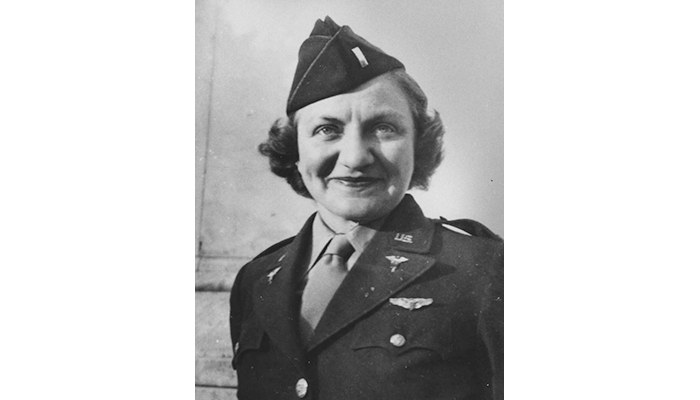
1st Lt. Aleda E. Lutz, Nov. 9, 1915 – Nov. 1, 1944. (Image courtesy National Museum of the United States Air Force)
Flight nurse 1st Lt. Aleda Lutz, a flight nurse from the first team sent to North Africa, served with exemplary skill and compassion while evacuating more than 3,500 men in over 196 missions. No flight nurse logged more flight time than Lutz. When her medevac flight transporting 15 men from Italy to France crashed in November 1944, she became the first flight nurse to die in combat during World War II (as Gardiner's crash, while tragic, was not combat related, but accidental). She was posthumously awarded the Distinguished Flying Cross, the Purple Heart, and an Air Medal with four oak leaf clusters–the oak leaf clusters relate to additional awards and may be bronze or silver and correlate to number of flight hours served in combat assault, combat support, and/or non-combat service flights.
The end of the flight nurse's creed states: "I can set the very skies ablaze with life and promise for the sick, injured, and wounded who are my sacred charges. …This I will do. I will not falter in war or in peace." It is a tribute to their skills that only 46 of the 1,176,048 patients air evacuated during the war died while en route to their destinations.
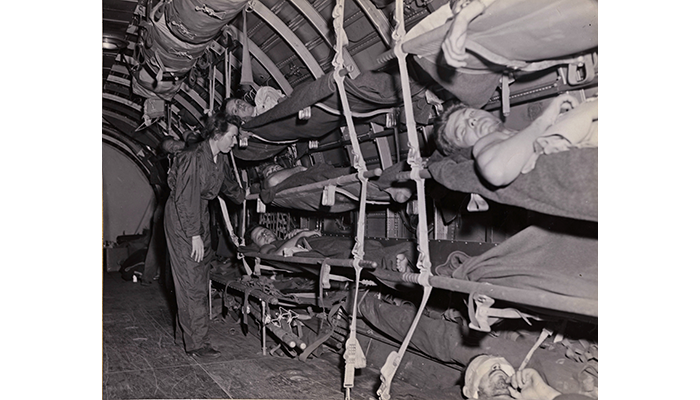
The U.S. Navy established their own program for flight nurses, within the Nurse Corps, on Dec. 10, 1944. War in the Pacific, with increased distances and fighting, made the decision necessary. Here, Navy flight nurse Irene E. Freeburger attends to the wounded while en route to Guam on June 15, 1945. (BUMED 09-8154-56)
Resources
Barger, Judith. Beyond the Call of Duty: Army Flight Nursing in World War II. Kent, Ohio: Kent State University Press, 2013.
Polette, Nancy. Angels on Board: Heroic Flight Nurses of World War II. CreateSpace Independent Publishing Platform, 2015.
"Winged Angels: USAAF Flight Nurses in WWII." National Museum of the United States Air Force.


